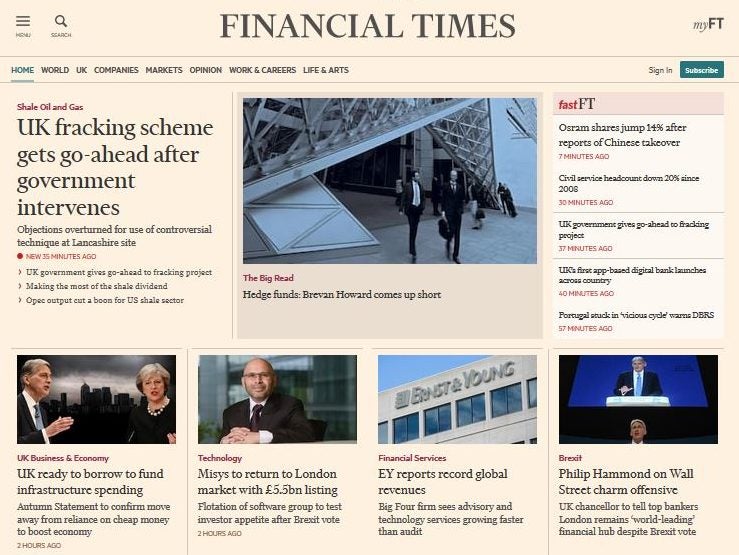
The Financial Times claims to have the fastest website in the news industry as it upgrades to a new platform this week.
The site has been rolled out to subscribers over the last year with the switch-over being completed this week.
Head of product Gadi Lahav said: “Everything has changed. The old FT.com has been there for quite some time. It isn’t responsive and the design is a little bit dated and so is the technology.
“Not everything that we want to do can be done on the old FT.com so we have decided after we had done some analysis to opt for a new technology and platform.”
The plan is to create “a consistent experience across all devices”.
Another key metric was page load time, said Lahav, who explained that the FT had tested engagement levels according to load time speeds of one, two and three seconds faster.
“We actually have a number for each second,” he said. “If we make the site one second faster, we know how much this equates in engagement score and revenues.
“Our website is more than three seconds faster than the old one. We find the faster the site, the more engaged people are. It’s great for us and the reader.
“We are the fastest website in the industry. Our pages load very quickly. We have spent a lot of time and effort on that.”
For journalists, the new site will provide upgraded tools for charts and the presentation of data, but it is the personalisation of content that Lahav said was the biggest change.
“Our focus is not on features – we aren’t saying ‘let’s build that’ – we are trying to find out how users use the site. We want to draw a user journey,” he said.
Currently the site is divided into “anonymous users” and “subscribers” with each experiencing it differently. “They have very different needs,” said Lahav.
“The Anonymous users want to try the site and decide if they want to subscribe or not and our goal is to convince them to subscribe. Subscribers are looking for value for money.”
The next step, he said, is to offer a reader news and information according to their interests. Within the next few months, Lahav said that about 30 per cent of the home page content would be customised for the person viewing it.
“Our vision is to provide all users with the most relevant information for them without diluting the editorial voice,” he said.
“It’s important to remember that the FT is also a working tool. The new site allows users to follow certain topics. Everything is tagged, the whole structure. The whole meta-data is based on that.”
“At the moment we need to say ‘tell us what you are looking at’, but in the future we will be able to recommend items and topics for them and eventually provide them with the most relevant information for them.”
But, he added: “This isn’t going to be Facebook or Twitter where you are put in your own bubble.”
The FT claims to have 600,000 digital subscribers and operates a paywall model, for some limited content made available for free.
Readers can access a limited amount of free FT content via social media and Google. Those arriving directly at the website home page are invited to take a subscription when the click on any story.
Picture: Reuters
Email pged@pressgazette.co.uk to point out mistakes, provide story tips or send in a letter for publication on our "Letters Page" blog
